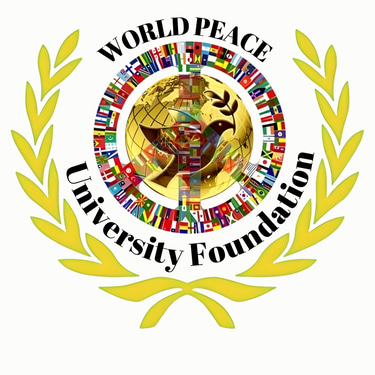The Role of Technology in Peacekeeping Efforts
4/24/20242 min read


Introduction
In today's world, technology plays a significant role in various aspects of our lives. From communication to transportation, technology has revolutionized the way we live and work. One area where technology has the potential to make a profound impact is in peacekeeping efforts. The United Nations, as the global organization responsible for maintaining international peace and security, is constantly exploring innovative technologies that can support its peacekeeping missions. In this article, we will delve into some of the key technologies that are being used or have the potential to be used in the pursuit of peace.
1. Big Data Analytics
Big data analytics refers to the process of examining large and complex datasets to uncover patterns, trends, and insights. In the context of peacekeeping, big data analytics can be a valuable tool in gathering and analyzing information to support decision-making and enhance situational awareness.
For example, by analyzing social media data, peacekeeping forces can gain valuable insights into the sentiments and opinions of local populations. This information can help identify potential sources of conflict and enable peacekeepers to take proactive measures to prevent escalation.
Furthermore, big data analytics can assist in identifying patterns of violence or criminal activities, allowing peacekeepers to allocate resources effectively and respond promptly to emerging threats.
2. Unmanned Aerial Vehicles (UAVs)
Unmanned Aerial Vehicles, commonly known as drones, have become increasingly prevalent in various fields, including peacekeeping. These remotely operated aircraft can be equipped with cameras and sensors to gather real-time information from conflict zones.
UAVs offer several advantages in peacekeeping operations. They can provide aerial surveillance, enabling peacekeepers to monitor activities in remote or inaccessible areas. This information can be crucial in identifying potential threats, monitoring ceasefire agreements, and ensuring compliance with international humanitarian law.
Additionally, UAVs can be used for search and rescue missions, delivering aid supplies, and conducting reconnaissance operations. Their ability to operate in challenging environments and gather data from above can significantly enhance the effectiveness and efficiency of peacekeeping efforts.
3. Virtual Reality (VR) and Augmented Reality (AR)
Virtual Reality and Augmented Reality technologies have gained popularity in the gaming and entertainment industries. However, their potential extends beyond these domains and can be harnessed for peacekeeping purposes.
Virtual Reality can provide immersive training experiences for peacekeepers, simulating realistic scenarios and enabling them to practice decision-making and conflict resolution skills in a safe environment. This can help enhance their preparedness and effectiveness in real-world situations.
Augmented Reality, on the other hand, can assist peacekeepers in the field by overlaying digital information onto their physical surroundings. This can include real-time translations, navigation assistance, or highlighting potential threats. By providing peacekeepers with enhanced situational awareness, AR can contribute to better decision-making and improved safety.
Conclusion
As technology continues to advance, its potential for supporting peacekeeping efforts becomes increasingly evident. From big data analytics to unmanned aerial vehicles and virtual reality, these innovations have the power to enhance situational awareness, improve decision-making, and ultimately contribute to the United Nations' goal of maintaining international peace and security.
However, it is important to recognize that technology alone is not a panacea for achieving peace. It should be seen as a complementary tool that works in conjunction with diplomatic efforts, conflict resolution strategies, and the commitment of nations to uphold peace.
By embracing and harnessing the potential of these technologies, the United Nations and the international community can take significant strides towards a more peaceful and secure world.
Connect
Email : info@wpufoundation.org
Follow
Stay Connected with Us
+1 (564)243 9111
World Peace University Foundation is 501(c)(3) nonprofit organization EIN - 99-1863511, All donation is tax dedcutable as federal govt rule. ©2024 WPU-F. All rights reserved.
Address
424 W. Bakerview Road, Ste 105-2056
Bellingham, WA 98226 United States
